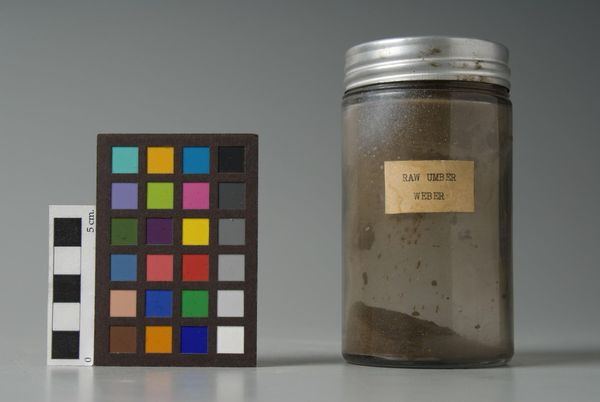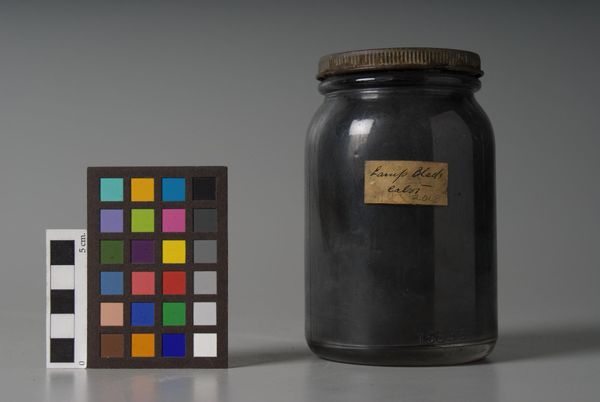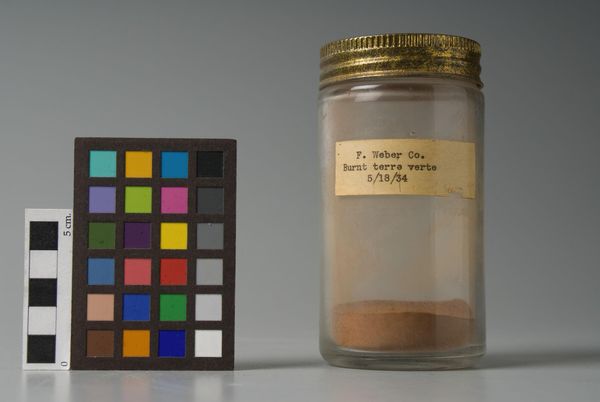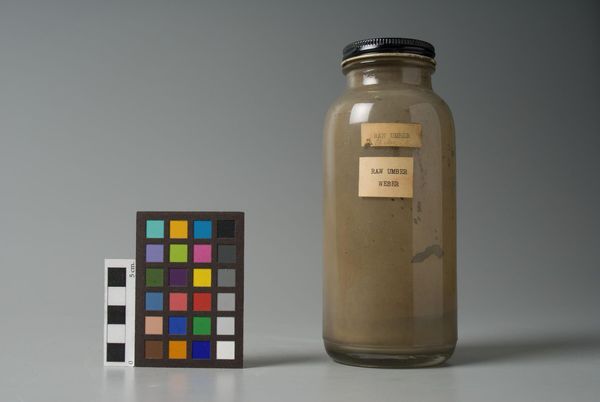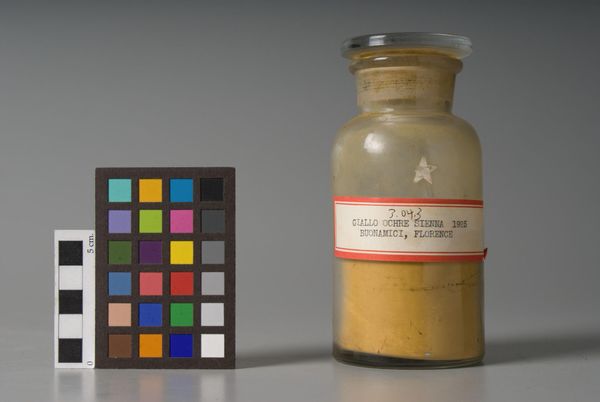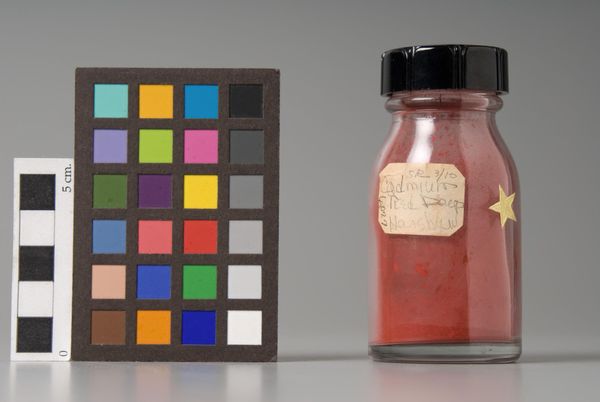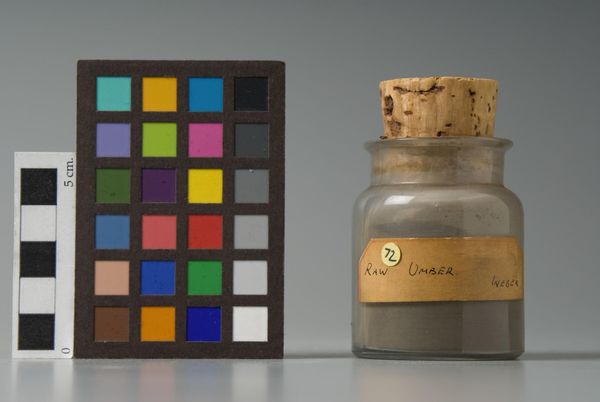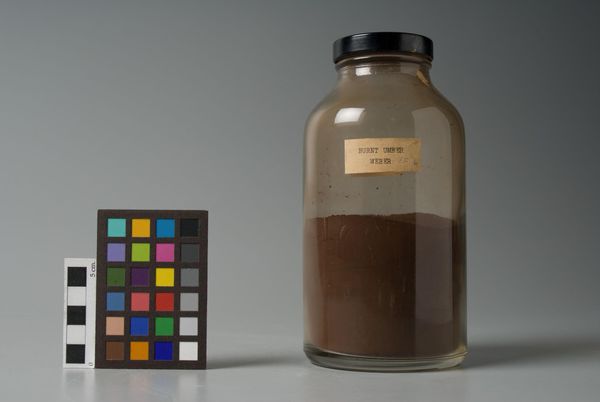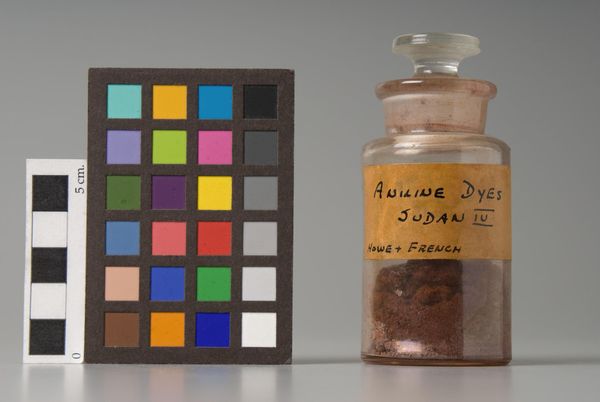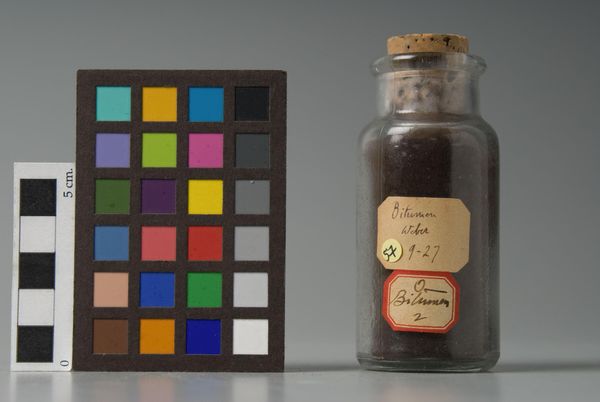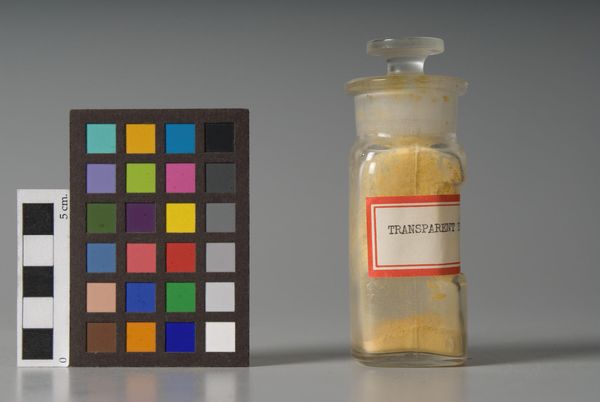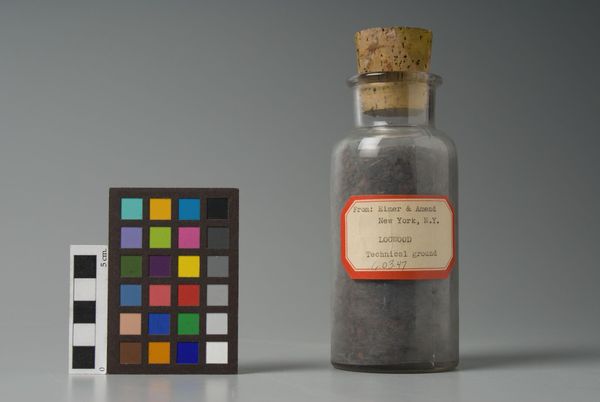
Copyright: CC0 1.0
Curator: What strikes me immediately is the dusty rose color of the pigment, how it’s settled in the bottom of the jar like a memory. Editor: Indeed, and what we're observing here is "Armenian Bole," a manufactured substance by Le Franc, housed in the Harvard Art Museums. It's a fascinating study in materiality. Curator: Materiality, yes, but let’s consider the colonial undertones. Armenian Bole, sourced perhaps from contested lands, processed by a French manufacturer. Who had access to this color? What narratives were amplified or suppressed through its use? Editor: An interesting point, and one could certainly delve into the socio-political implications. However, I find the presentation itself—the glass jar, the aged label—equally compelling. The composition invites a semiotic reading of preservation and scientific observation. Curator: Perhaps. But this isn’t merely about observation; it’s about power dynamics embedded within the art world and its supply chains. Editor: Regardless, it’s a compelling piece that invites inquiry into the very nature of artistic creation and its historical context. Curator: Precisely—a starting point for conversations about access, agency, and the stories behind the colors we see.
Comments
No comments
Be the first to comment and join the conversation on the ultimate creative platform.
